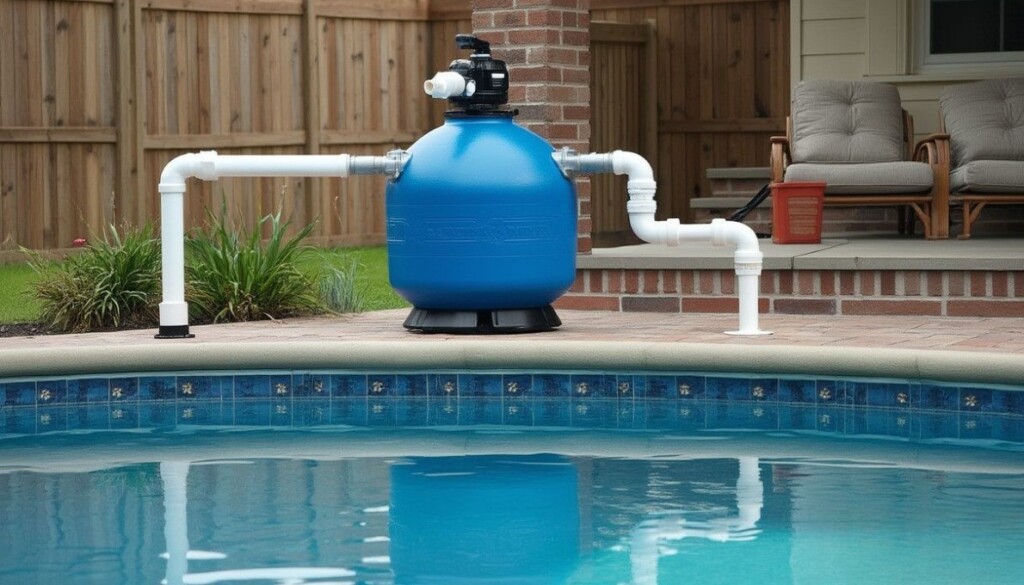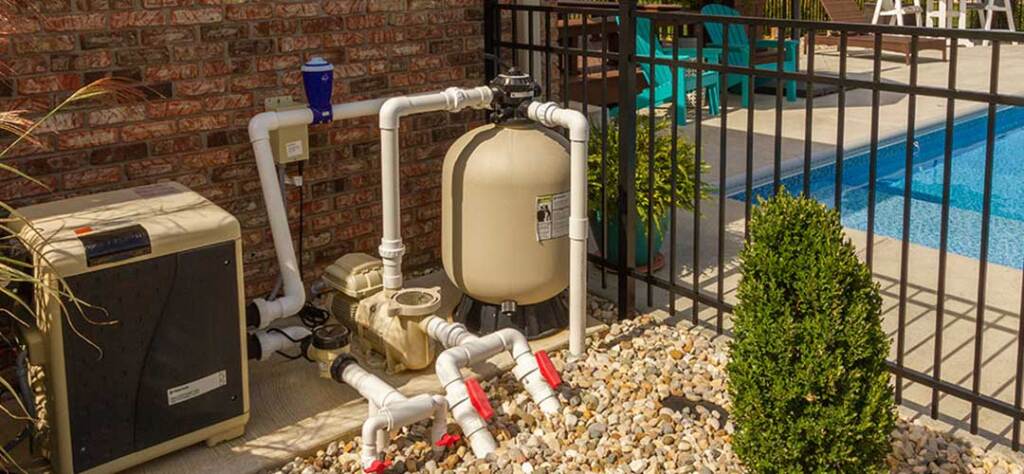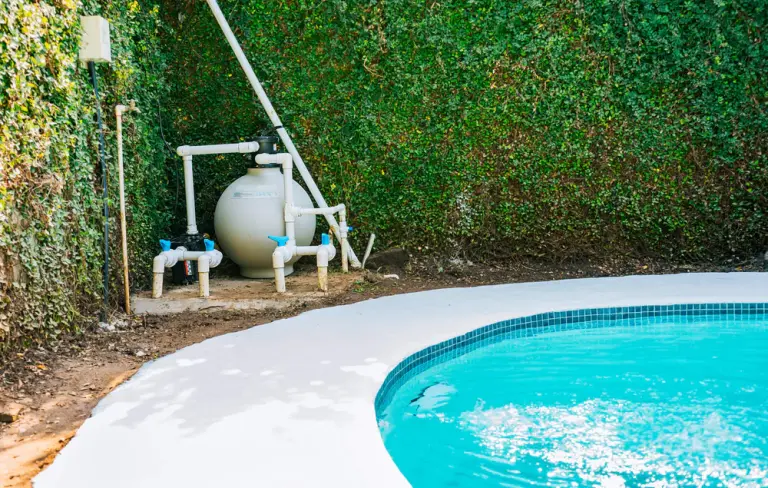Ever look at your pool on a perfect summer day and see… a cloudy mess? You’ve skimmed, you’ve balanced chemicals, but the water just won’t get that sparkling, inviting clarity. The frustration is real, and the secret culprit is often hiding in plain sight: your pool’s circulation system.
Getting that pristine water isn’t about magic; it’s about having the right equipment. This guide will demystify the heart and lungs of your pool—the swimming pool pump and filter. You’ll learn how to choose the best system for your Pennsylvania home, ensuring countless days of crystal-clear enjoyment.

The Unsung Heroes: Why Your Pump and Filter Matter
Think of your pool’s equipment as its circulatory system. The pump is the heart, and the filter is the kidneys. The pump pulls water from the pool, pushes it through the filter to be cleaned, and then sends it back. Without this constant circulation and filtration, your pool would quickly become a stagnant, murky pond.
A properly matched swimming pool pump and filter system works tirelessly to remove dirt, debris, algae spores, and other contaminants. It’s the single most important factor in maintaining your pool’s clarity and longevity. Investing in the right duo saves you time, money on chemicals, and a whole lot of headaches.
Decoding the Pool Pump: Finding Your Flow
The pump is the engine of your pool. Its job is to move water, but not all pumps are created equal. Modern technology has introduced options that are significantly more efficient and effective than the models of a decade ago.
Single-Speed Pumps
This is the old standard. A single-speed pump runs at one high speed whenever it’s on. It’s effective, but it’s like driving your car with the pedal floored all the time—it’s loud and consumes a massive amount of energy. Due to the Department of Energy’s conservation standards, these are becoming less common for new swimming pool installations.
Two-Speed Pumps
A step up from single-speed, these pumps offer a high and a low speed. You can run it on high for demanding tasks like vacuuming and on low for general, everyday circulation. This offers some energy savings over a single-speed model, but it still lacks the fine-tuned control of the modern champion.
Variable-Speed Pumps (The Modern Champion)
Variable-speed (VS) pumps, a key component in modern eco-friendly pool designs, are the gold standard in today’s market. Instead of just one or two speeds, they use an advanced motor that allows you to dial in the exact flow rate needed. By running at a lower speed for longer periods, they provide superior filtration and can slash your pool’s energy consumption by up to 90%, which is why they are certified by programs like ENERGY STAR®.
For Pennsylvania homeowners, a VS pump is a game-changer. It handles the demands of a hot July day just as efficiently as the lighter needs of a cool September afternoon, saving you significant money on your utility bills over the life of the pool.
| Pump Type | Initial Cost | Energy Efficiency | Noise Level |
| Single-Speed | Low | Low | High |
| Two-Speed | Moderate | Medium | Medium-High |
| Variable-Speed | High | Very High | Very Low |
Image Suggestion: A photo of a modern, sleek variable-speed pool pump installed neatly on an equipment pad.
Alt Text: An energy-efficient variable-speed swimming pool pump installed for a Pennsylvania home.
The Filter Face-Off: Which Type Reigns Supreme?
If the pump is the heart, the filter is the hero that traps all the gunk. It sifts out particles you can’t even see, keeping your water pure, a critical step for maintaining what the CDC calls ‘healthy swimming’. There are three main types of filters, each with its own set of pros and cons.
Sand Filters
These are the classic workhorses. A sand filter is a large tank filled with specially graded sand. As water passes through the sand bed, dirt and debris are trapped. They are simple to operate and maintain; cleaning involves a process called “backwashing,” which reverses the water flow to flush out the trapped dirt.
- Filtration: Filters particles down to 20–40 microns.
- Maintenance: Requires backwashing every few weeks. Sand needs to be replaced every 5–7 years.
Cartridge Filters
Cartridge filters offer a significant upgrade in filtration quality. Instead of sand, they use a large, pleated fabric cartridge that looks like an oversized air filter from a car. Water passes through the pleats, and particles are trapped. They require less water to clean since you don’t need to backwash.
- Filtration: Filters particles down to 10-20 microns, resulting in visibly clearer water.
- Maintenance: No backwashing. The cartridge is removed and hosed off 2-4 times per season. Cartridges need replacement every 3-5 years.
Diatomaceous Earth (D.E.) Filters
For the absolute best in water clarity, nothing beats a D.E. filter. These filters use grids coated with diatomaceous earth—the fossilized remains of tiny aquatic organisms. This ultra-fine powder can trap particles so small they are invisible to the naked eye.
- Filtration: Filters particles down to an incredible 1-3 microns. This is the pinnacle of pool filtration.
- Maintenance: The most intensive of the three. It requires backwashing, followed by adding new D.E. powder to recoat the internal grids.
| Filter Type | Filtration Level (Microns) | Maintenance Level | Water Usage |
| Sand | 20-40 (Good) | Low | High (Backwashing) |
| Cartridge | 10-20 (Better) | Medium | Low (Hose Cleaning) |
| D.E. | 1-3 (Best) | High | Medium-High |
Image Suggestion: A simple infographic visually comparing the three filter types: sand, cartridge, and D.E., showing how they trap dirt.
Alt Text: A comparison graphic showing how sand, cartridge, and D.E. swimming pool filters work to clean water.
Sizing It Right: The Goldilocks Principle
Choosing the right swimming pool pump and filter isn’t just about picking a type; it’s about picking the right size. This is where many DIY installations go wrong. Bigger is not better. An oversized pump paired with an undersized filter is inefficient, ineffective, and can cause premature equipment failure.
The goal is to achieve proper “turnover,” which is the time it takes for the entire volume of your pool’s water to pass through the filter once. For a residential pool, a turnover rate of 8–10 hours is ideal.
Calculating the correct size requires considering the volume of your pool, the desired turnover rate, and the resistance in your plumbing system. An expert in landscaping around pools can perform the necessary calculations to ensure your pump and filter are a perfect match. This is why hiring a professional pool builder is an invaluable step.
Frequently Asked Pool System Questions
How often should I run my pool pump?
Ideally, you should run your pump long enough to achieve at least one full turnover per day. With a variable-speed pump, this often means running it 12–24 hours a day at a very low, energy-sipping speed for superior filtration.
When should I clean or backwash my filter?
Most filters have a pressure gauge. When the pressure reads 8-10 PSI above its clean, starting pressure, it’s time to clean it. This indicates the filter is full of debris and water flow is being restricted.
Can I upgrade my old single-speed pump to a variable-speed model?
Absolutely! This is one of the best upgrades a pool owner can make. In most cases, a new VS pump can be installed with your existing plumbing and filter, and the energy savings often pay for the upgrade in just a couple of seasons.

The Clear Choice for Your Pennsylvania Pool
Your swimming pool should be a source of relaxation, not a chore. The foundation of that enjoyment is a reliable, efficient, and properly sized swimming pool pump and filter. By understanding the differences between single-speed and variable-speed pumps, and between sand, cartridge, and D.E. filters, you can make an informed decision.
A modern variable-speed pump paired with a high-quality cartridge filter offers a fantastic balance of performance, efficiency, and easy maintenance for most Pennsylvania homeowners. But the most important step is ensuring the system is designed to integrate some of these top custom pool designs with the right support systems.
Ready to achieve the crystal-clear water you’ve been dreaming of? Contact our design experts today. We create flawless backyard oases, complete with the ideal swimming pool pump and filter for your Pennsylvania home.

